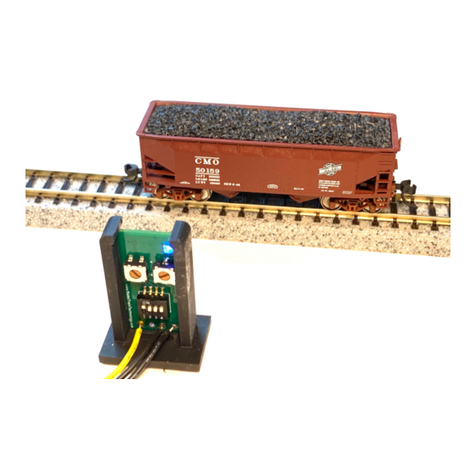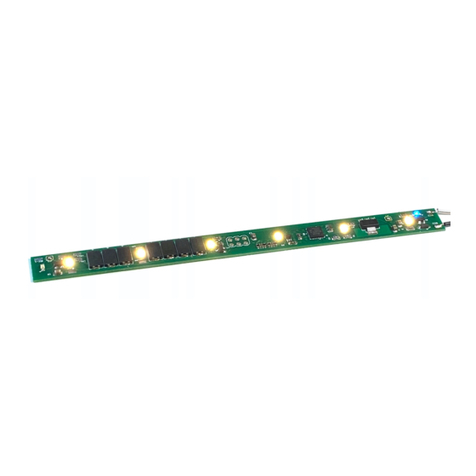
April 2021
SELECTING THE BEHAVIOR SPEED
The behavior speed adjustment screw is inside the Controller. You
access it with the provided 2mm screwdriver. Gently turn the screw
inside from zero to about 300 degrees. It does not turn 360 degrees.
Left or counterclockwise is faster (less time between stages), right or
clockwise increases the time between stages. You can make the
adjustment at any time since the Controller reads the setting at the
beginning of each detector trip event.
SETTING THE BIGHTNESS (LED & FIBER)
Setting the brightness for each output is accomplished through a
series of SINGLE pushes to the select button. In an idle state, with no
triggers active, press the select button once. This will START the
sequence to adjust ALL the LED outputs one at a time.
After the first press all the LEDs will light, and the RED led will be
active for the adjustment. You may not see any visible change.
Gently Insert the screwdriver into the adjustment screw hole and turn
the insider screw clockwise and counterclockwise to reach the desired
brightness for the red LED.
When you are happy with the setting, press the select button - once.
This will save the Red LED setting; the Red LED will blink and cycle the
adjustment to the Yellow LED. Adjust as needed. Then press the
button once again. The Yellow LED will blink and then set the mode





























